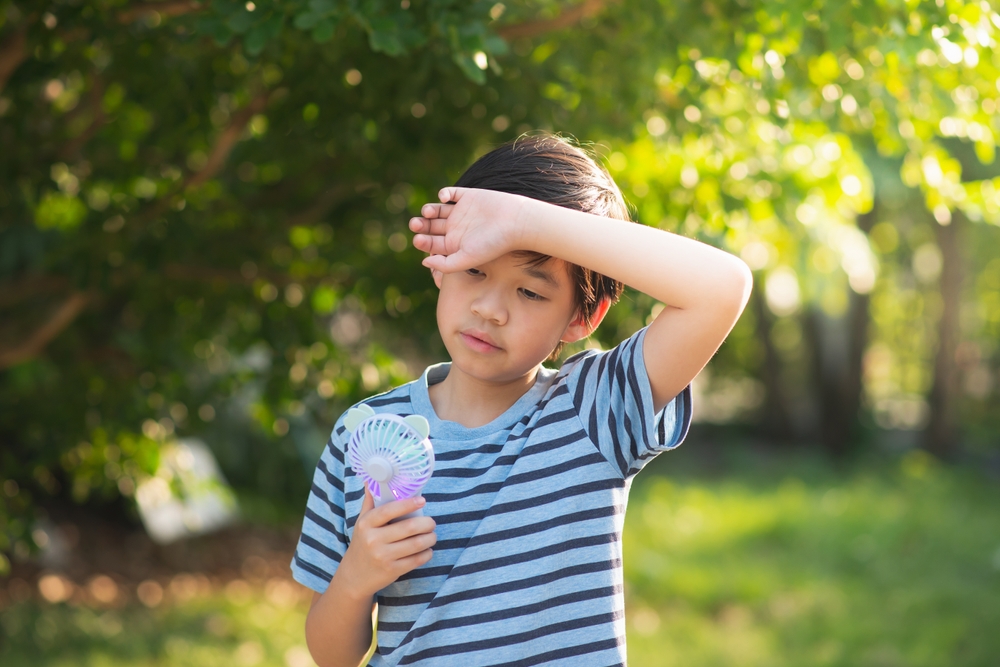They run you ragged, never stop moving, have more energy than a rabbit, and never want to settle down. Yes, you know we are talking about young children. With the warm weather on the way, parents should be knowledgeable about recognizing and preventing heat exhaustion in children. They won’t recognize it is happening, so it’s up to you to spot the signs.
Simple Measures to Prevent Heat Exhaustion in Children
As temperatures rise, it’s important to take proactive steps to protect children from heat exhaustion and keep them safe during outdoor activities.
Limit Outside Play
Limit outdoor play during the hottest parts of the day. Instead, encourage your kids to take breaks in the shade, go indoors to cool off in air-conditioning, or pause to rest and hydrate.

On particularly hot and humid days, try to keep outside play limited to the cooler early morning or later in the day.
Hydrate Regularly
Staying hydrated is important for everyone, but children especially need water or sports drinks with electrolytes when spending time in the sun. Avoid sugary drinks and encourage your kids to carry water with them. Remind them to drink regularly, even if they don’t feel thirsty.
Monitor Bathroom Use
A great way to know if your child is properly hydrated is to recognize if they are urinating normally. Be sure to note the color.
- If their urine is very yellow, they are not getting enough water.
- If it is light, they are adequately hydrated.
Teach your children to look at their own urine and explain how a yellow color is a sign they need to drink more water. You can make this a game for younger children.
Be Sure Their Clothing Is Appropriate
Send them outside with light colored clothing and breathable fabrics, like cottons. It should be loose fitting, and don’t forget the sunscreen.
Recognizing the Signs and Symptoms of Heat Exhaustion
There are multiple signs that your children have gotten too much sun. Heat exhaustion is the body’s reaction to loss of salt and water from sweating excessively.
Look for the following signs:
- Clammy skin
- Nausea
- Weakness
- Muscle cramps
- Headache
- Shallow breathing
- Dizziness
- Fainting
- Rapid weak pulse
When to Seek Prompt Medical Care
If their temperature has reached 103.1, cool their body down with a hose or spray and remove some clothing. If possible, place them in a cool bath. If their body temp has not gone down in an hour’s time, call for medical assistance.
Heat stroke can occur if your child’s body temperature does not change. This is a very serious medical emergency.
Pediatric Care in Henrico, VA
Summer can be a fun time for everyone in the family. Know all the signs when your child has gotten too much heat and when to seek prompt medical attention.
Contact ADM Parham Pediatrics at (804) 964-1600 with any other questions about recognizing heat exhaustion or what to do.
Sources:
Prevent Child Deaths in Hot Cars – HealthyChildren.org
How to Prevent Heat Stroke: Common Sense Guidelines | Children’s Hospital of Philadelphia

